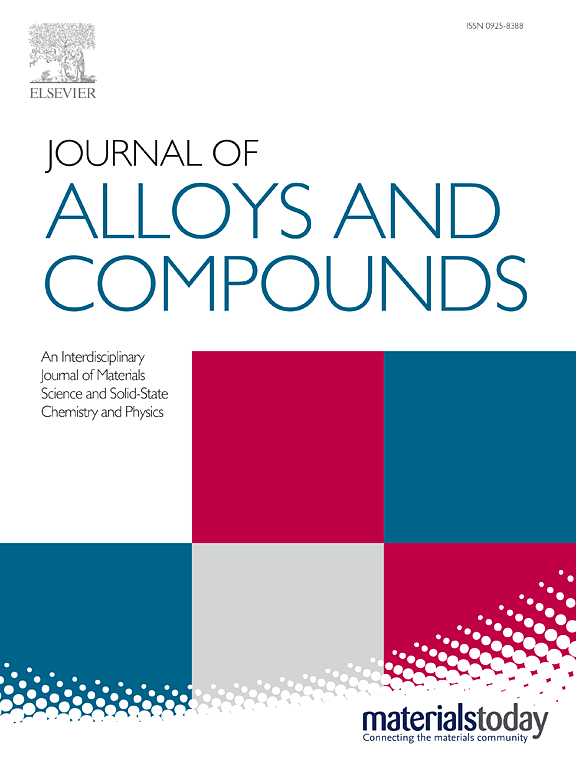T-Nb2O5/rGO@CC anode for ultralong-life zinc-ion hybrid supercapacitors
IF 5.8
2区 材料科学
Q2 CHEMISTRY, PHYSICAL
引用次数: 0
Abstract
Zinc-ion hybrid supercapacitors (ZIHSCs) have garnered widespread attention due to their integration of the excellent characteristics of both batteries and capacitors. This study employs a synergistic strategy combining hydrothermal and high-temperature calcination methods to construct a nanosphere-structured T-Nb2O5 composite anode material coated with reduced graphene oxide (rGO) on a flexible carbon cloth (CC) substrate (T-Nb2O5/rGO@CC), in conjunction with a hierarchical super-mesoporous activated carbon cathode (ACcp@CC) derived from discarded citrus peel. The rGO coating structure suppresses the volume expansion of the internal nanostructure caused by charging and discharging, effectively enhancing mechanical stability. At the same time, the three-dimensional conductive network of rGO effectively compensates for the poor intrinsic conductivity of Nb2O5. The constructed ZIHSC delivers a capacitance of 718.56 mF cm-2 at 1 mA cm-2, and achieves a maximum energy density of 399.20 μWh cm-2 at 1 mW cm-2. Furthermore, after 50,000 ultralong-cycle, the capacity retention rate is 104.17%. The assembled flexible device not only possesses excellent mechanical properties but also delivers a specific capacitance of 389.89 mF cm-2 at 1 mA cm-2, providing long-term power for various electronic devices. This study provides a solid theoretical reference for the design of stable composite structures and the investigation of ultra-long cycling performance in niobium-based electrode materials.

T-Nb2O5/rGO@CC超长寿命锌离子混合超级电容器阳极
锌离子混合超级电容器(zihsc)由于集电池和电容器的优良特性于一体而受到广泛关注。本研究采用水热和高温煅烧相结合的协同策略,在柔性碳布(CC)衬底(T-Nb2O5/rGO@CC)上构建了一种纳米球形结构的T-Nb2O5复合阳极材料(T-Nb2O5/rGO@CC),并结合了从废弃柑橘皮中提取的分层超介孔活性炭阴极(ACcp@CC)。氧化石墨烯涂层结构抑制了内部纳米结构因充放电引起的体积膨胀,有效提高了机械稳定性。同时,还原氧化石墨烯的三维导电网络有效地弥补了Nb2O5固有导电性差的缺陷。所构建的ZIHSC在1ma cm-2时的电容为718.56 mF cm-2,在1mw cm-2时的最大能量密度为399.20 μWh cm-2。5万次超长周期后,容量保持率为104.17%。组装后的柔性器件不仅具有优异的机械性能,而且在1 mA cm-2时的比电容为389.89 mF cm-2,可为各种电子设备提供长期电源。该研究为稳定复合材料结构的设计和铌基电极材料超长循环性能的研究提供了坚实的理论参考。
本文章由计算机程序翻译,如有差异,请以英文原文为准。
求助全文
约1分钟内获得全文
求助全文
来源期刊

Journal of Alloys and Compounds
工程技术-材料科学:综合
CiteScore
11.10
自引率
14.50%
发文量
5146
审稿时长
67 days
期刊介绍:
The Journal of Alloys and Compounds is intended to serve as an international medium for the publication of work on solid materials comprising compounds as well as alloys. Its great strength lies in the diversity of discipline which it encompasses, drawing together results from materials science, solid-state chemistry and physics.
 求助内容:
求助内容: 应助结果提醒方式:
应助结果提醒方式:


